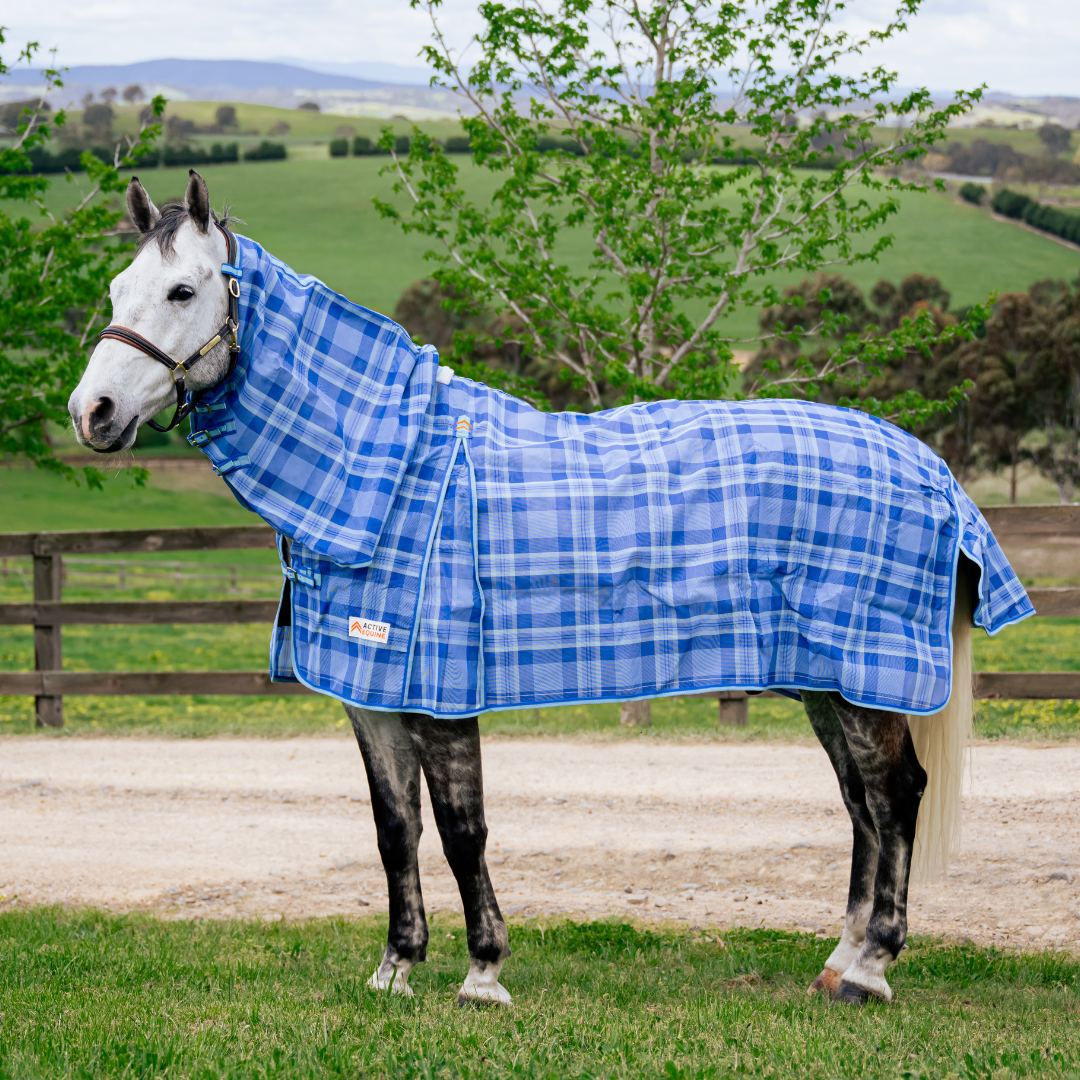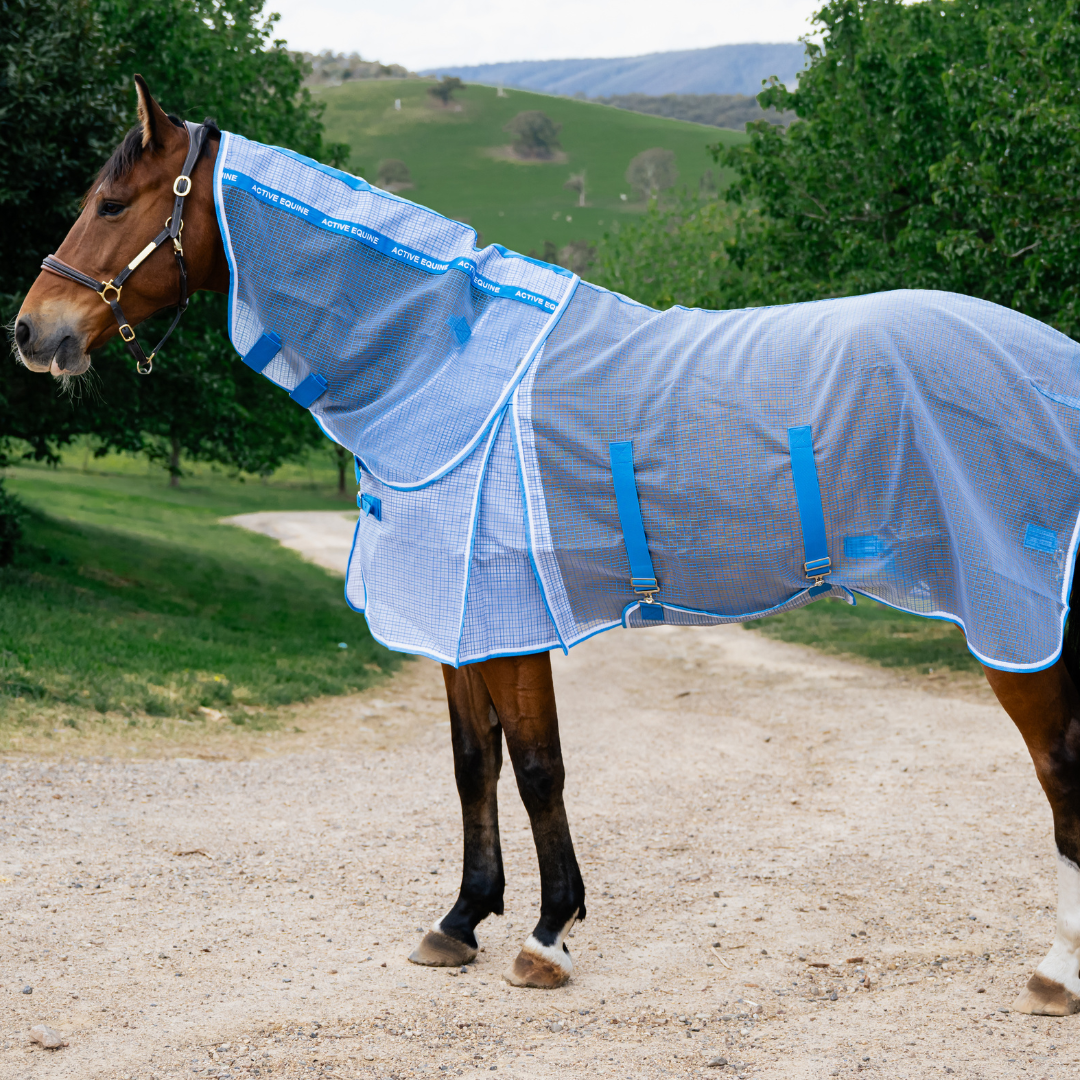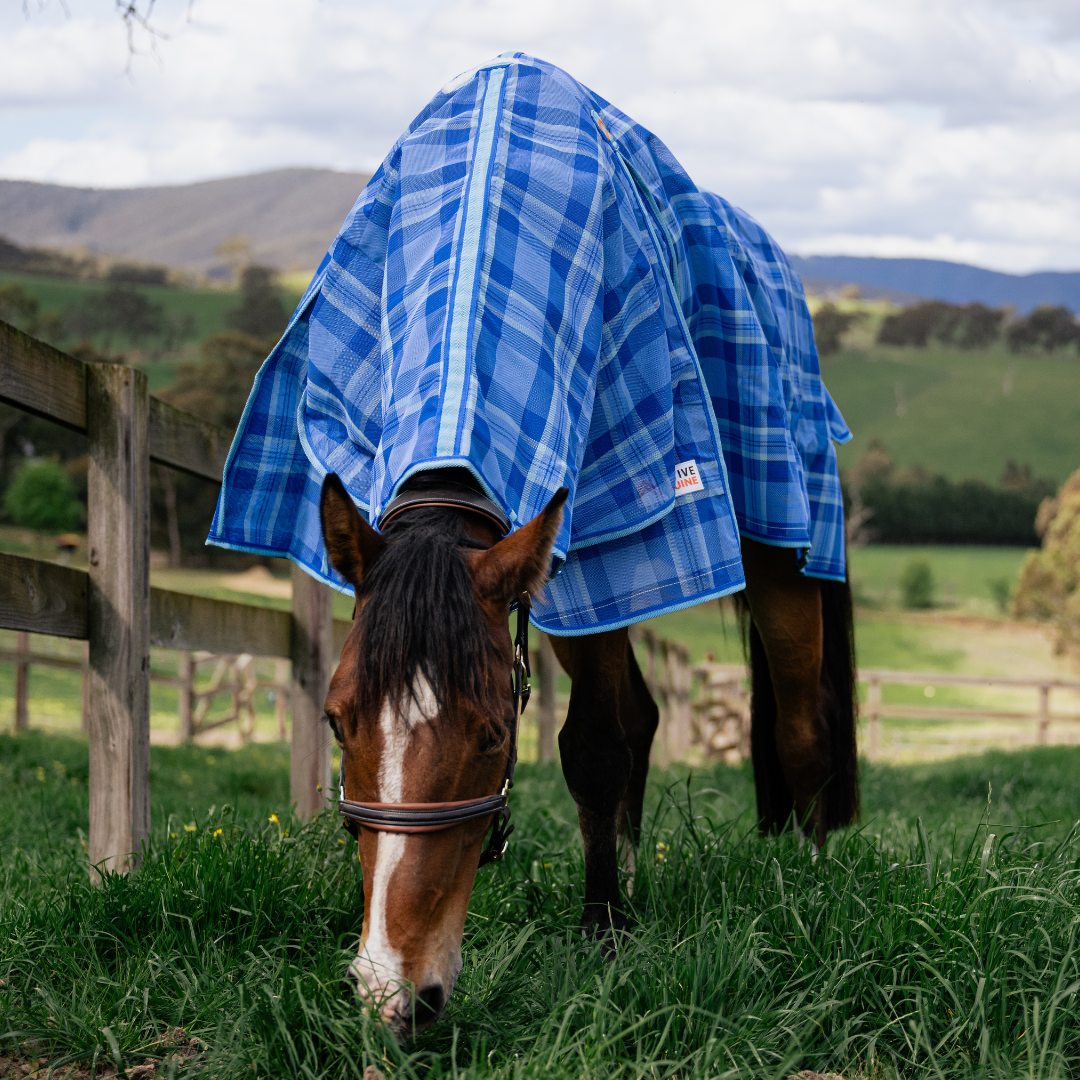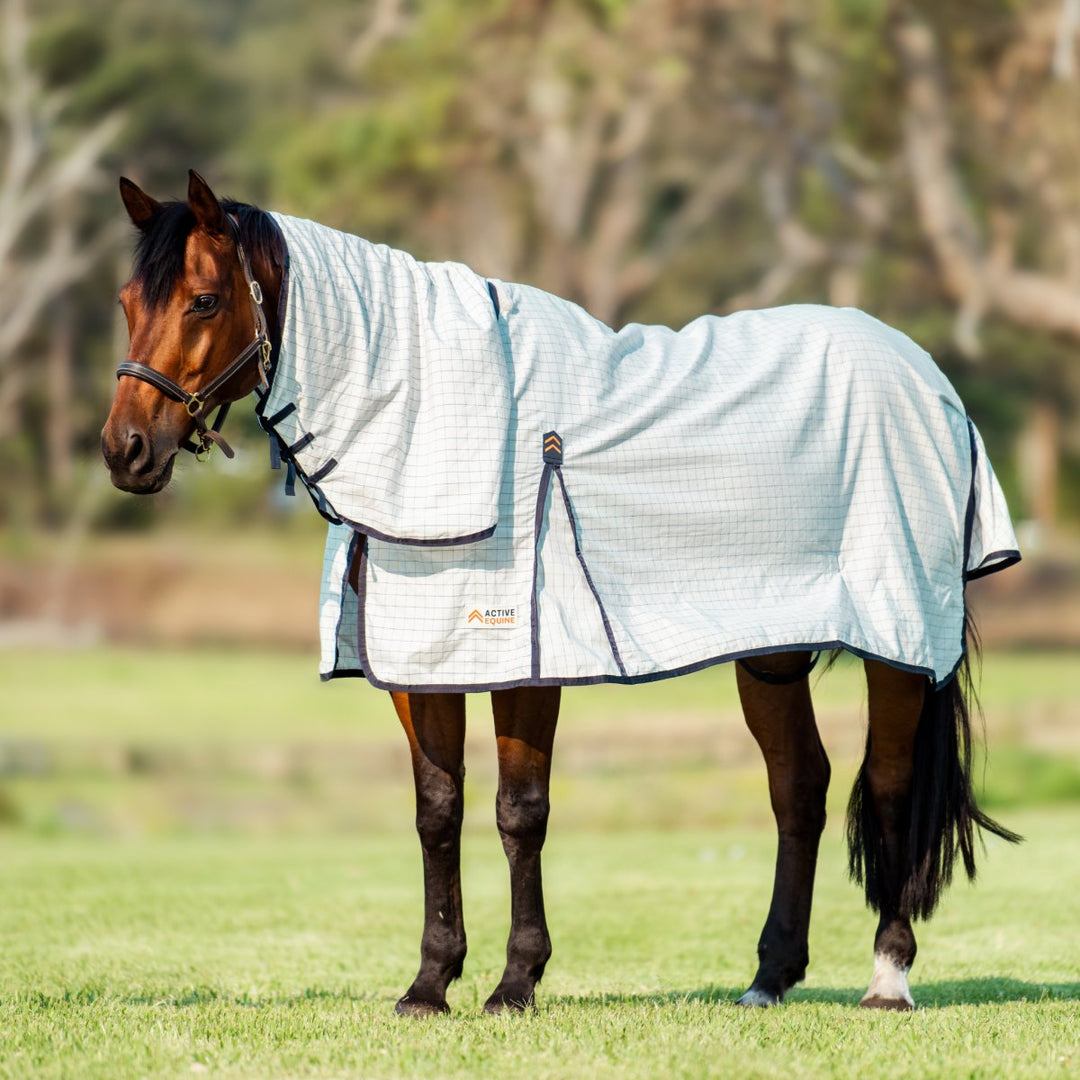Is Your Horse Bugging Out?
Mild winter weather, warm and wet spring and summer weather are sure signs of a long bug season ahead. Flies, midges and mosquitos not only have the potential to carry disease, cause eye infections and inflict painful bites, they can also take a lot of energy and moisture from a horse through the vigorous stomping, swishing and shaking required to be rid of them. Unlike wild horses, domestic horses can’t run long distances and find sanctuary in less bug infested areas so we need to give them a helping hoof.
Read on to uncover some of the strategies we find effective in minimising the presence of flies, mosquitoes and other annoying bugs near your horse throughout the warmer months.
Paddock
An adult horse weighing in at 450kgs will generate up to 9 tonnes of manure a year (approx 25 kilograms per day) and between 15-40 litres of urine per day. Unlike urine which drains into the soil, manure remains on the surface harbouring flies and worms. Unbroken and fresh in open air, manure becomes a magnet for flies and worms and offers the perfect habitat for breeding. For these reasons, there are a few straight forward strategies you can employ to help minimise the fly population in your area:
- If you have a manure pile…..cover it - flies prefer fresh manure for breeding so any piles or compost bins you keep should be covered. Covering speeds up the composting process which further makes the pile or bin less attractive to flies.
- Regularly collect manure and harrow your pastures - Manure piles exposed to rain can be breeding grounds for flies and mosquitos. As time consuming as this will seem, regularly collecting manure limits the available places for them to breed. If collecting isn’t an option, try harrowing your paddocks. By breaking up manure piles, you are helping the manure to dry out quicker, making it less attractive for flies.
|
Active Equine Tip - If you have acreage or hilly terrain, try maxmising the amount of time your horse spends on drier, higher ground. Doing so minimises horse time in lower areas where spring and summer rain will collect and take longer to dry out. |
Stable
Stables are important temperature regulated environments for horses. They also provide the same quality refuge for the insects we are trying to avoid. Whilst its impossible to keep a stable insect free, there are some practical tips you can employ to keep them at bay:
- Keep your stable clean - I know this one is pretty obvious but you know what they say when you assume….
- Keep your stable equipment clean - again, another obvious suggestion but insects are attacted to wet and dirty equipment so do your best to keep your tack clean and dry.
- Limit your light sources - Artificial light attracts a range of irritating insects. Darker barns also aren’t very inviting for insects like flies, biting midges, and horse flies. Try keeping the lights off (or down) and stable your horse around dusk (for midges and mosquitos) and during the heat of the day (for stable flies). This can help them escape heavy attacks.
- Air circulation - Midges and mosquitoes aren’t the best of flyers, so any air movement is going to make things much harder for them to fly and land on your horse. By creating well ventilated spaces and strategically placing strong fans around your stable, you can make it difficult for most flying insects to enter your stable.
- Encourage natural predators - in the battle against flies, mosquitos and midges, we should see their enemies as our friends. Small birds and spiders can be a great help and whilst I appreciate that not everyone loves spiders, they do contribute to the cause.
-
Traps - Sticky traps make a great addition to your summer stable and definitely pull their weight in reducing the number of flying insect you have. Be sure to hang them away from swishing horse tails, pets and birds.
Tack
If you employ the above strategies then a useful bit of tack will all but ensure your horse won’t be too troubled by annoying and biting insects.
- Horse Fly Masks - We covered the topic of Fly Masks in a previous blog so we encourage you to take a read if you haven’t already. There are a range of different fly masks you can choose from including:
- Full Face Mask - great all over protection against flies, midges and the sun.
- Fly Mask with Ears - for horses who are prone to suffering midge bites.
- Fly Masks without Ears - for horses with sensitive ears.
- Muzzle Fringe Fly Masks - for horses that don’t like nose covering.
- Detachable Nose - perfect for horses who are very sensitive to flies or midges around their muzzle who are sensitive to the sun and need added UV protection.
- Summer Horse Rugs - We’ve covered the topic of summer rugs here and here so again, please review these articles if you haven’t done so already. Cotton Rugs, Mesh Horse Rugs, Fly Mesh Horse Rugs, and Hybrid Horse Rugs are very useful in keeping flies and biting insects off your horse. Most rugs will provide UV protection so they can be worn both inside and out in the paddock. You can review our summer horse rug range here and choose a rug that’ll suit your horse and climate.
- Fly Boots - A horse’s lower legs are susceptible to fly and midge bites which can cause swelling and irritation. Fly boots have come a long way in recent years and now maximise air flow whilst not impeding circulation. If you don’t have a set for your horse, you should definitely consider it.
|
Active Equine Tip - For a horse fly mask to be effective, it needs to fit your horse correctly in all areas – the back of the ears, the jowls, the cheeks, eyes and nose. A mask that is too tight will at best be uncomfortable for your horse and at worst could cause eye and skin irritation. |
Plan for next season
No battle is won without preparation and planning, so start preparing for this coming summer and the next….now. You can do this by:
- Making notes on where insects are the biggest problem.
- Noting what strategies worked and what didn’t.
- Speak to your neighbours and friends and see what they are doing different (or indeed can learn from you).
- Checking you tack and make sure it is fit for purpose (repairing or replacing where necessary).
In summary, minimising where insects live and breed is your best bet in keeping them away from your horse. Mud and manure are their favourite places so do what you can to contain these around your property. Keep your horse and stable dry and clean. Finally, ensure you have the right tack and ensure all horse equipment is clean and in good working order.
So take the time to plan and prepare for the coming summer and see the difference it makes. As always, if you have any questions, contact us at Active Equine, your premiere Australian Online Saddlery.







